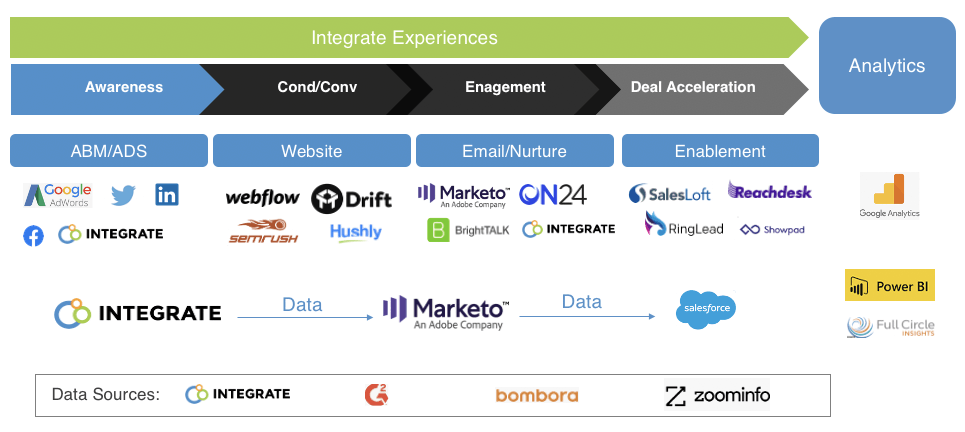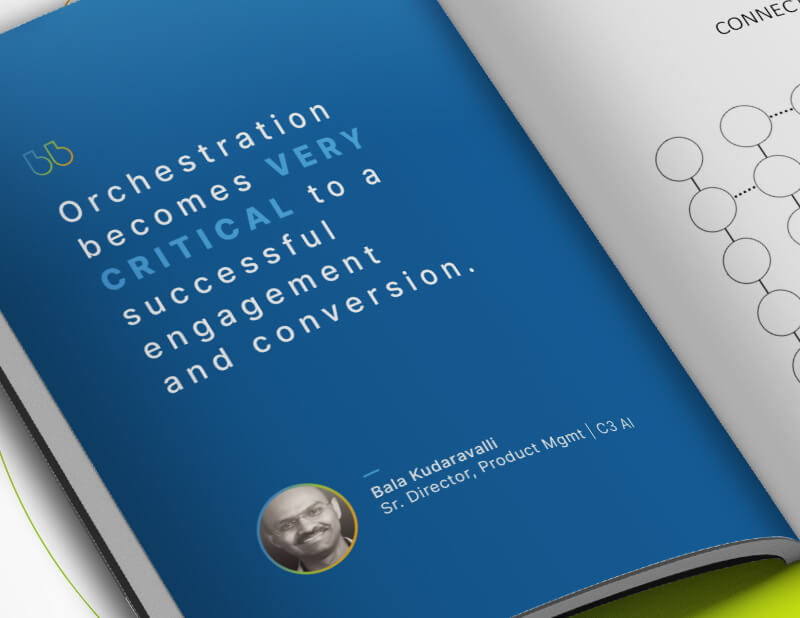Building a MarTech Stack That Connects with Today’s B2B Buyers
We recently published Precision Demand Marketing: Achieving the Promise of Predictable Pipeline, a book that transforms the B2B marketing paradigm. This week’s installment provides a glimpse into Chapter Four: “Connect.” Check out blog recaps of Chapters One, Two and Three.
If you’re like most buyers, you no longer wait for someone to try to sell you something. You use multiple sources — online publications, user reviews, social media, webinars, and other channels — to learn about the products and services you want. Then you choose where and when to buy them.
This buyer-centric process is changing B2B marketing dramatically. Marketers no longer determine how prospects move through the buying process. To connect with buyers, they depend on marketing technology to know who those buyers are and where they are on their paths to purchase.
Fortunately, with every challenge there is an opportunity.
With a Precision Demand Marketing (PDM) approach, you can bring your martech tools and technology together, tear down the walls between your marketing teams, and connect with the right buyers, wherever they are in their journeys, right when they’re ready to buy.
Make the Most of the Right Marketing Tech Stack
Obviously, to succeed in a buyer-driven world, marketers must manage technology effectively. Tech’s role in marketing is rising exponentially. In 2011, Scott Brinker introduced the MarTech Landscape infographic on his Chiefmartec blog, which tracked every known advertising technology firm. That year, the number of tech solutions totaled 150.
Five years later, that number had jumped to 3,874.
Today, Brinker tracks 9,932 tech solutions across six categories –– advertising and promotion, content and experience, social and relationships, commerce and sales, data, and management.
The problem is, marketers feel like they’re drowning. In one survey, 40 percent said their organizations weren’t using their existing stacks to full potential. They cited integration issues, lack of training, and lack of communication about capabilities as significant problems.
Too many companies mistake technology for strategy. Surveys consistently show no correlation between the size of martech budgets and the effectiveness of the martech stack.
This is About People — Real People
PDM is about delivering the right content at the right moment in a real person’s journey. To do that, start by removing the barriers between all the available channels, technology, data sources, and teams within your company. Then connect with today’s buyers and reach your goals by focusing on people.
Amazon has taken the lead on this approach. The company’s Day 1 philosophy puts customers at the heart of everything the company does. Technology’s purpose? To serve the customer’s needs.
Amazon Chairman and Founder Jeff Bezos summed it up: “Leaders start with the customers and work backward. They work vigorously to earn and keep customer trust. Although leaders pay attention to competitors, they obsess over customers.”
Even in a buyer-centric world, many marketers are still focused on their own needs.
Imagine what that’s like for a buyer. You’re getting two different emails from the same company in one hour. Or you’re invited to an event, so you stop at a company’s booth for a chat, then sign up for a newsletter. Next thing you know, you’re deluged with a nurturing series that acts as if you’ve never connected with the company.
The message isn’t “How can we help you?” It’s “We want your business, but we don’t really know or care about what you want or how you want it.”
“Orchestration becomes very critical to a successful engagement and conversion,” said Bala Kudaravalli, Sr. Director, Product Management, C3 AI. And he’s right.
Customer-Centric Marketing: Focus on Buyers’ Needs, Not Your Needs
To take a PDM approach, think of technology this way: It sets a foundation for how you segment and message your audiences. But it requires a customer-driven marketing strategy conducted by real humans that prioritizes the buyer’s wants and needs. That strategy should recognize that a potential buyer who visited your site for the first time is different than a former client who signed up for your newsletter from a new email address.
Many companies have rushed into overbuying marketing technology solutions without a clear plan. Now is the time to reset and analyze your current solutions and develop a clearer and more economical technology-driven data and analytics strategy.
How Do I Build a Marketing Tech Stack for the Buyer-Centric World?
Here’s an example of how we designed the strongest possible marketing tech stack for Integrate to succeed in today’s marketplace. Although their journeys may not be linear, we expect at least some buyers will be at each stage –– awareness, conversion, engagement, and deal acceleration –– in their company’s journeys. Our stack makes it easier to connect, wherever the buyer is, whether that’s through advertising, account-based marketing (ABM), our website, email outreach, or another channel.

By evaluating your tech stack honestly and openly, you can also create a structure that supports an exceptional buyer experience –– wherever that buyer is on the path to purchase –– even as you tie each tech purchase to a business objective.
Here are the questions to ask yourself and your team about your martech stack:
- Why do we buy marketing and buyer-related technology in our company?
- What is the purpose of each solution?
- Who uses each solution?
- What are their needs for the solutions?
- How do the solutions impact (or fail to impact) the buyer experience?
Use the answers you get to determine where gaps exist. Once you’ve done so, you’re ready to develop a technology infrastructure that, like the rest of PDM, puts buyers first.









